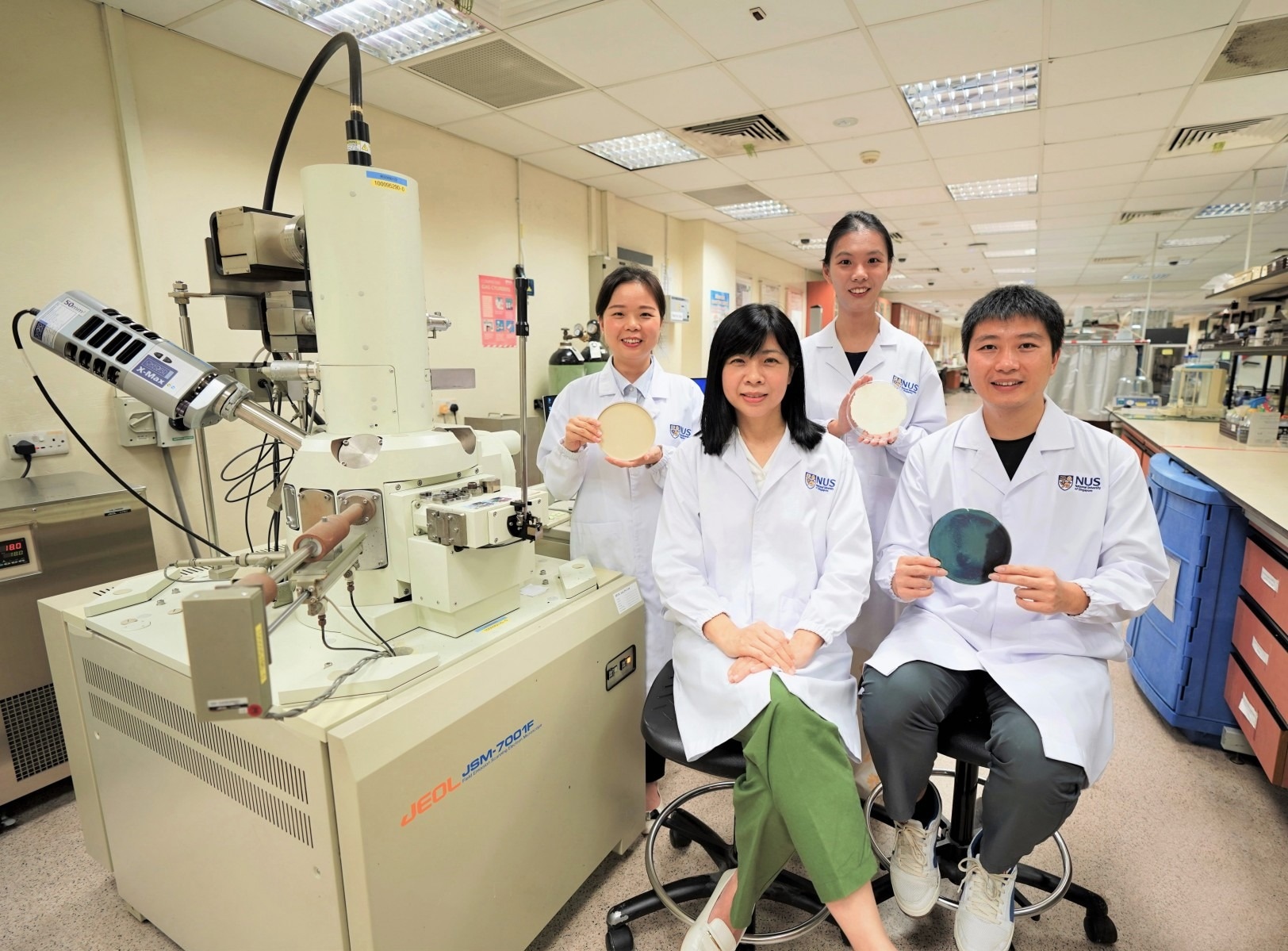The effortless manufacturing of inorganic membranes that are energy-efficient and highly customizable is made possible by a breakthrough in synthesis methodology, possibly revolutionizing many sectors and promoting greater sustainability.
 A team of researchers led by Prof. Ho Ghim Wei (seated, left) has developed a revolutionary technique for producing ultrathin inorganic membranes that are energy-efficient and highly customizable for different applications. Image Credit: National University of Singapore
A team of researchers led by Prof. Ho Ghim Wei (seated, left) has developed a revolutionary technique for producing ultrathin inorganic membranes that are energy-efficient and highly customizable for different applications. Image Credit: National University of Singapore
It is possible to compare inorganic membranes to a sieve in a kitchen. Similar to how sieves separate small particles from bigger ones, inorganic membranes, usually made of ceramics or metals, preferentially separate molecules based on their size and characteristics.
An innovative method for creating ultrathin inorganic membranes has been created by a team of researchers from the College of Design and Engineering (CDE) at the National University of Singapore, led by Professor Ghim Wei Ho from the Department of Electrical and Computer Engineering. This represents a major development in membrane technology since these freestanding membranes can operate without any supporting substrate.
The inorganic membranes, supported by a uniform, simple synthesis strategy, have the potential to benefit uses beyond filtering and separation. They are also highly customizable and easy to make.
Due to their flexibility, membranes have the potential to revolutionize several sectors and businesses that rely on membrane technology, including sensing, catalysis, and energy conversion.
New opportunities for conquering energy challenges in the face of climate change have been made possible by the NUS scientists’ groundbreaking research, which supports sustainability and effectiveness in industrial processes.
Membranes Reimagined
Conventional membrane technologies are known to be costly and energy-intensive, requiring pressure, heat, and at times chemicals to work properly. They are frequently used in purifying and extraction processes.
Additionally, the membranes must be regenerated, and the filtered components usually require extra processing after separation, thereby increasing energy requirements and expenses.
These drawbacks of conventional membrane technologies provided Dr. Zhang Chen, a postdoctoral research fellow in Prof. Ho’s team, the motivation to create a novel synthesis method for extremely effective inorganic membranes.
To create the desired membrane, Dr. Zhang’s technique entails taming chaotic, free-floating, inorganic building blocks in a liquid environment. With the help of this tunable procedure, it is possible to optimize the membrane’s pore properties and thickness for various uses.
Our study has also allowed us to take a fresh approach to rethink how inorganic membranes are traditionally developed.
Dr. Zhang Chen, Postdoctoral Research Fellow, National University of Singapore
The NUS researchers have provided a synthesis framework that other researchers can use. This could encourage the discovery of more innovative membranes with a wider compositional variety in an efficient and scalable way.
The membranes they created have a more geometric variety from a structural standpoint than traditional ones, giving designers more freedom and choices when creating membrane structures.
The research also investigates the practicality of membranes, where highly selective 2D barriers are employed to regulate energy transfer across the membrane.
This property could influence the way the membrane works by enabling the filtering of ions according to their charge, the application of various energies like thermal, electrical, or light energy, or the selective concentration of specific molecules.
In many energy-related applications, such as fuel cells and solar energy conversion, such versatility is extremely desirable.
Our new technique has the potential to transform industries that heavily rely on membranes for their operation, particularly those related to energy or the environment. The ability to create freestanding inorganic membranes that are highly selective opens up numerous exciting possibilities for applications in advanced spatial dynamic separation, catalysis, sensors, memories, and ionic conductors, all of which represent unprecedented developments.
Ho Ghim Wei, Professor, Department of Electrical and Computer Engineering, National University of Singapore
The study team’s results were published in Nature on March 29th, 2023.
Formulating a Greener Future
With a focus on efficiency and customization, the researchers’ development plays a crucial part in NUS' environmental initiatives by significantly lowering the energy usage of membrane-related processes globally and, as a result, decreasing the carbon footprint of various industries.
Encouraged by the potential of the discovery, Prof. Ho intends to lead a multidisciplinary group of researchers in a multifaceted research program to advance membrane technology.
Prof. Ho added, “By exploring the vast range of membrane compositions and coupling them with various forms of energy, we hope to unlock new applications and make further strides towards a more sustainable future.”
Ultimately, the team hopes to make their technology more widely available by creating automated manufacturing tools to accelerate the production of inorganic membranes.
Journal Reference:
Zhang, C., et al. (2023) Mechanistic formulation of inorganic membranes at the air–liquid interface. Nature. doi:10.1038/s41586-023-05809-y.